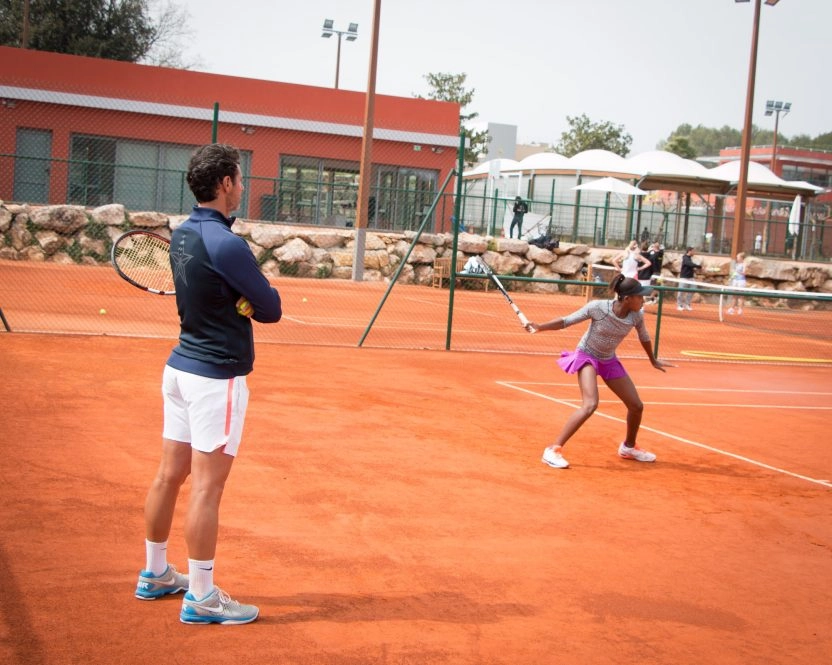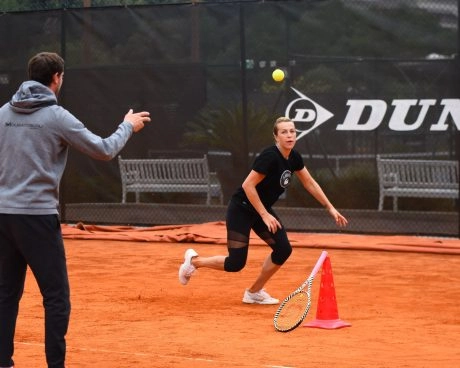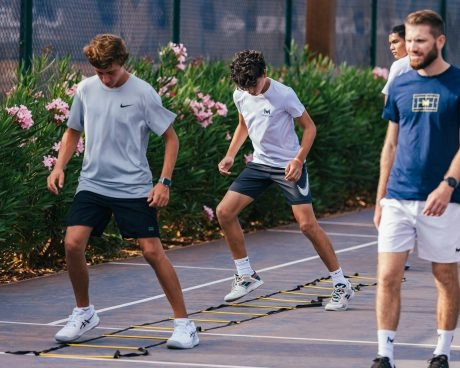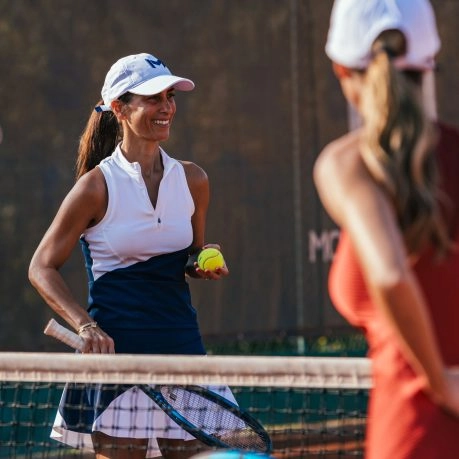Waiting position
The waiting position is the posture you adopt before your opponent strikes the ball:
- Feet shoulder-width apart: This provides good balance and increased responsiveness.
- Knees slightly bent: Keep your knees bent so you can react quickly in any direction.
- On your toes: Staying on your toes allows you to move more quickly as soon as the ball is struck.




















